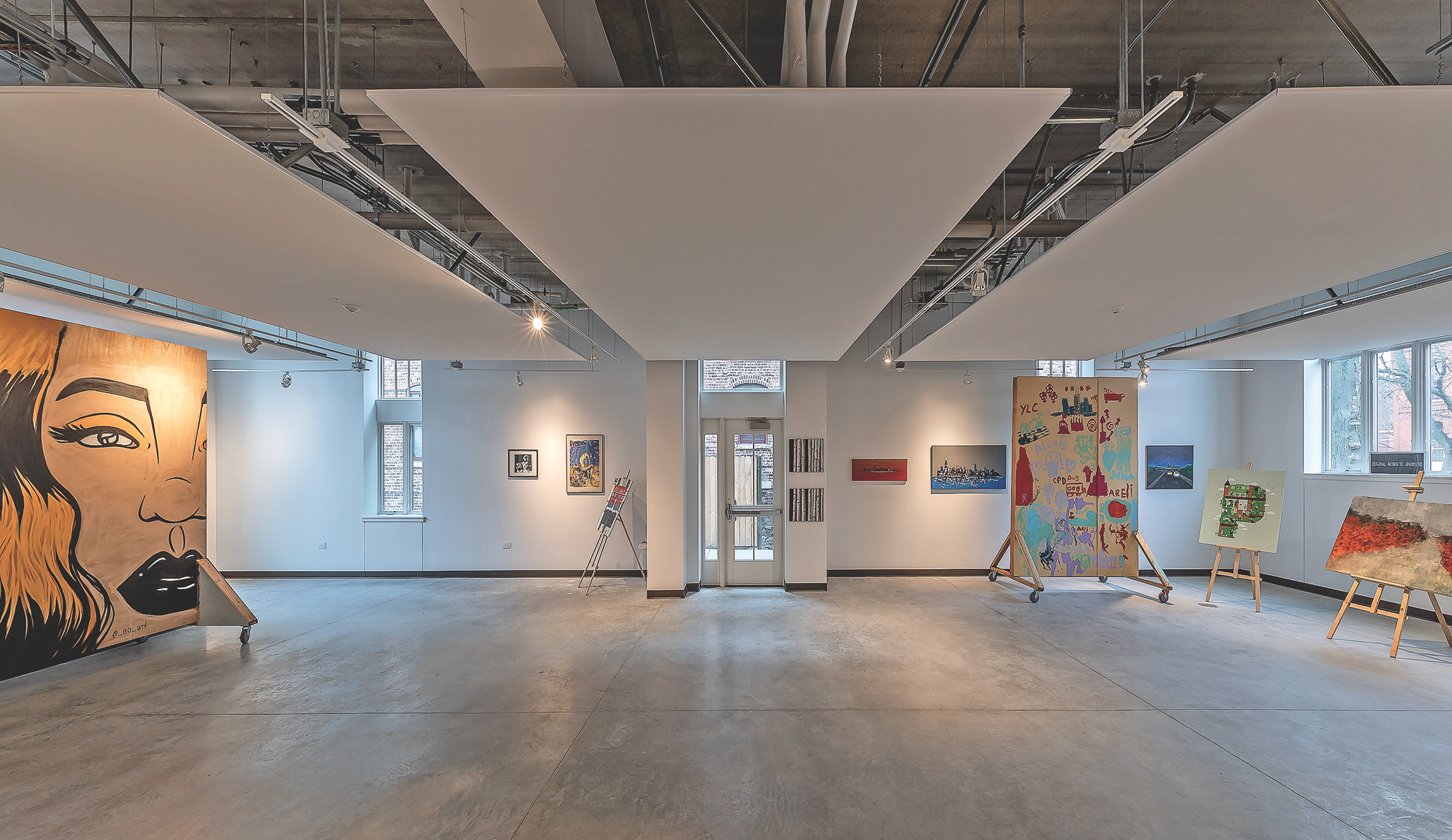The statistics are grim. According to Harvard’s Joint Center for Housing Studies, nearly half of all renter households (20.4 million) spent more than 30 percent of income on housing in 2019; 17.6 million households spent more than 50 percent. The National Low Income Housing Coalition reported that there were only 37 affordable and available homes for every 100 extremely low-income renter households nationwide in 2019.
Then there are the homeless—580,466 by the U.S. Department of Housing & Urban Development’s last count (January 2020); of these, 37,252 were veterans. HUD estimated that 1.4 million people slept in homeless shelters at some point in 2018. During the 2016-17 school year, 1.35 million children experienced homelessness at some point, reported the National Center for Education Statistics.
Despite the grim statistics, energetic developers, nonprofit groups, and their design and construction teams are finding ways to build housing that is not only affordable, but aesthetically pleasing and environmental responsible as well. Let’s take a look at 13 of them.
1. CAPITOL VISTA | Washington, D.C.

Located eight blocks north of the U.S. Capitol, Capitol Vista provides 104 studio and one- and two-bedroom rentals ($1,131 to $1,354/month): 21 at 30% AMI, 83 at 50% AMI. The $50 million enterprise may be unique in having Black owners (Dantes Partners), a Black property manager (Faria Management), and a Black interior designer (Determined by Design, founded by Kia Weatherspoon, NCIDQ, ASID, a Building Design+Construction 2020 “40 under 40” honoree). Grimm + Parker (architect) headed the team: SK+A Structural Engineers (SE, CE); Wiles Mensch Corp. (CE, landscape design); Century Engineer (MEP); MaGrann Associates (sustainability); and Hamel Builders (GC).
2. HOPEWORKS STATION NORTH | Everett, Wash.
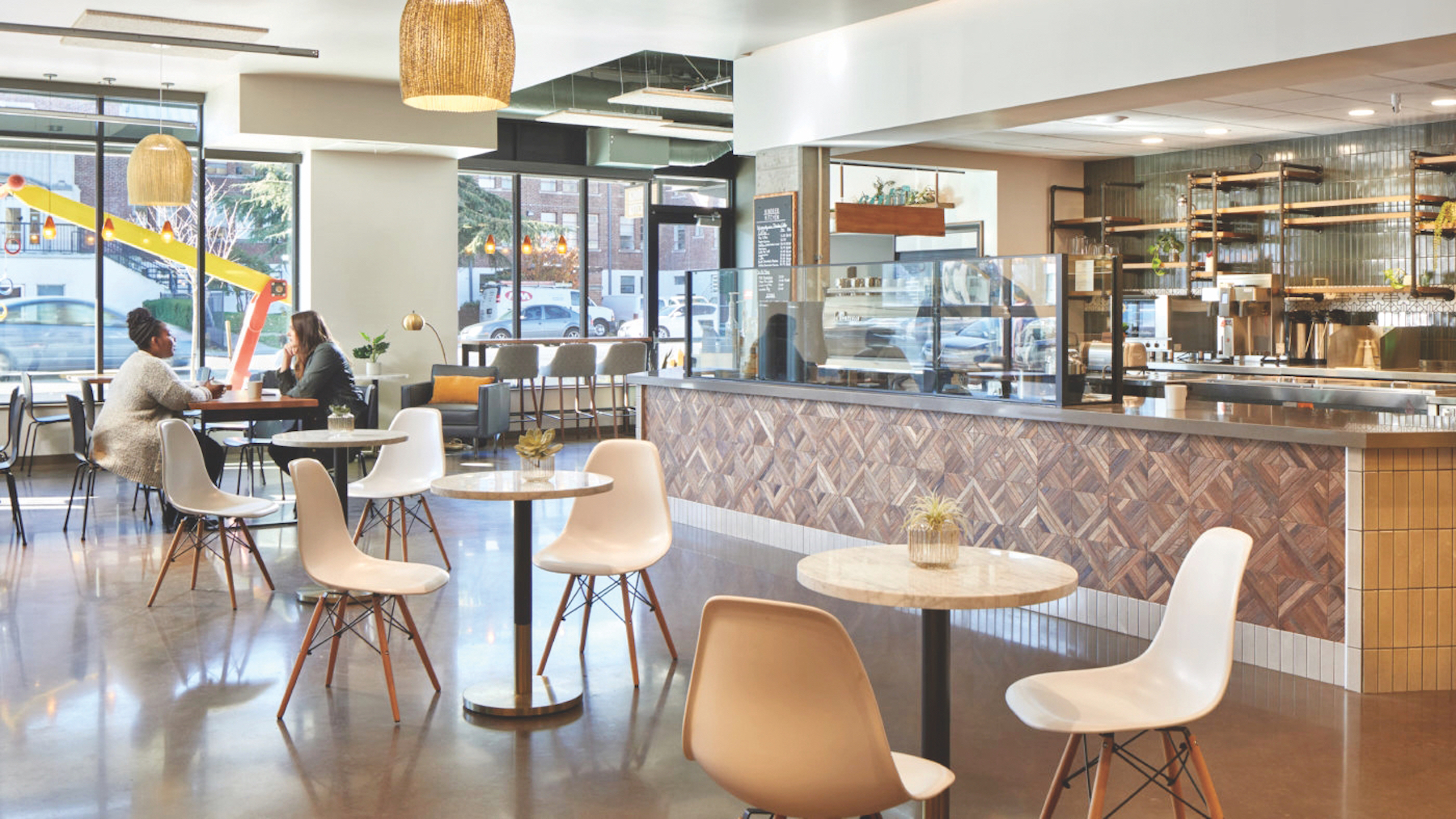
This four-story, net-zero-energy, LEED for Homes Platinum apartment complex has been selected for the Living Future Challenge affordable housing pilot and participated in the LEED Multifamily Midrise pilot to demonstrate compliance with Washington State’s Evergreen Sustainable Development Standard. Its 532 solar panels generate 198,000 kWh/year. GGLO and Dykeman Architects (designers) steered the $17.7 million project for HopeWorks Social Enterprises, with Beacon Development Group (development consultant), O’Brien360 (sustainability consultant), and Kirtley-Cole Associates (GC). The 65 studio and one- and two-bedroom units house homeless youth and veterans earning 30-50% AMI.
3. THE AYA | Washington, D.C.
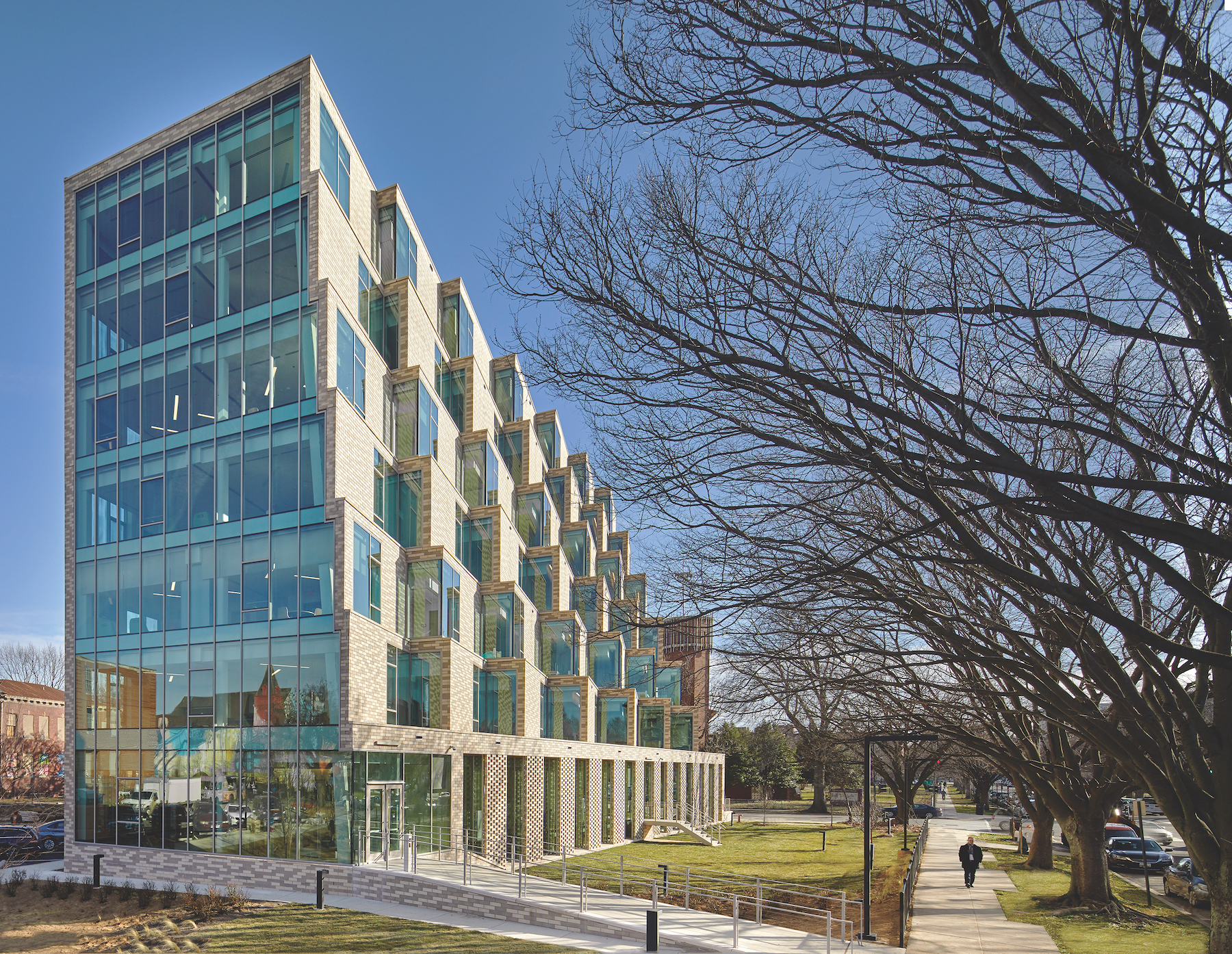
The Aya offers emergency housing for up to 50 families—largely mothers with young children—in Southwest Washington. Each color-coded floor has 7-10 units; adjoining rooms can be linked via lockable doors to accommodate families up to 12. The joint venture of LEO A DALY and Studio Twenty Seven Architecture designed the $21 million center for the D.C. Department of General Services. Silman Associates (SE), A. Morton Thomas (CE), Setty & Associates (MEP), and Blue Skye Construction (design-build contractor) contributed.
4. FOUR TEN LOFTS | Baltimore, Md.
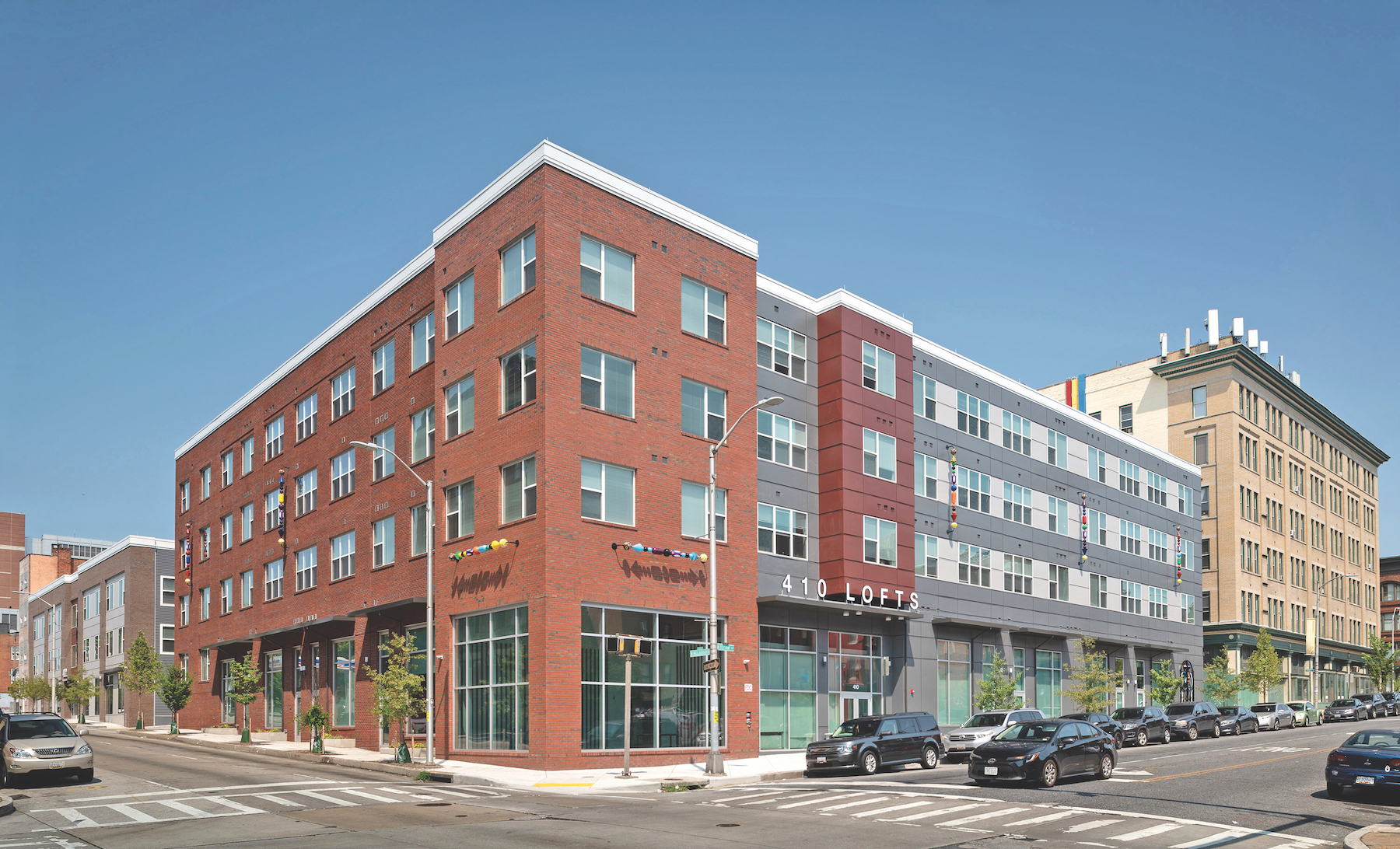
Designed for artists and the homeless, this $14.2 million complex, in the Bromo Tower arts and entertainment district, provides eight three-bedroom apartments in one building and 68 one- to three-bedroom units in a second structure. The latter building has a two-story gallery, sound rooms for musicians, an art workroom, and a spray booth. All rooms come fully furnished; United Way outfitted the apartments with bedding, towels, dishes, and small appliances. Energy Star Multifamily and National Green Building Standard certification were achieved.
5. LINEAGE | Alexandria, Va.
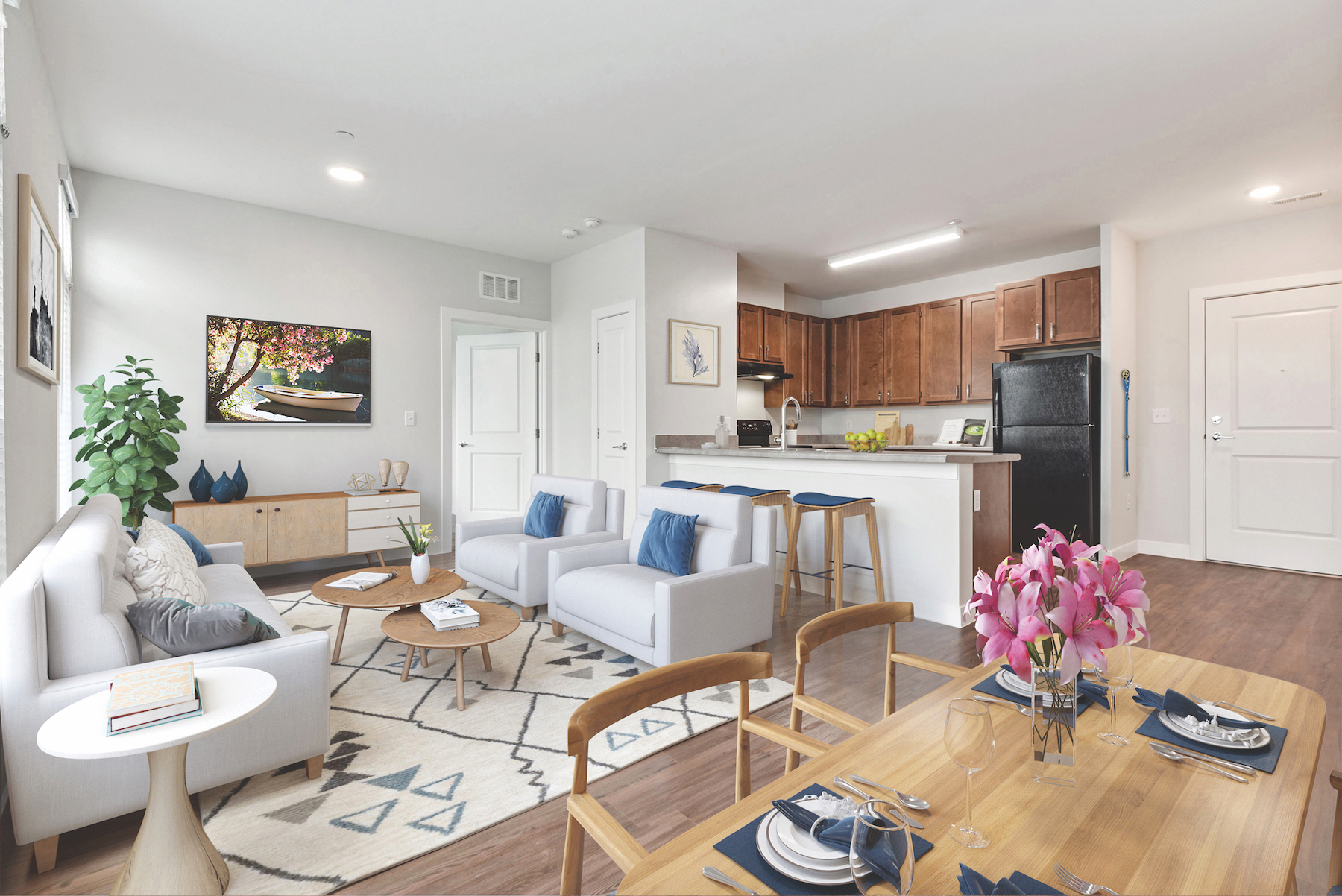
In 1942, the U.S. Housing Authority constructed 15 apartments for African-American war industry workers and their families in the historic Parker-Gray District of Alexandria, Va. The precast modernist units remained in use as public housing until 2018, when they were deemed beyond repair. The KTGY-led project team leveraged the FAR requirements to garner 52 units on the 0.71-acre site: 15 at 30% AMI, 11 at 50% AMI, and 26 at 60% AMI. Six units at the $12 million complex are fully accessible. Lineage earned EarthCraft Gold certification.
6. PULLMAN ARTSPACE LOFTS | Chicago, Ill.
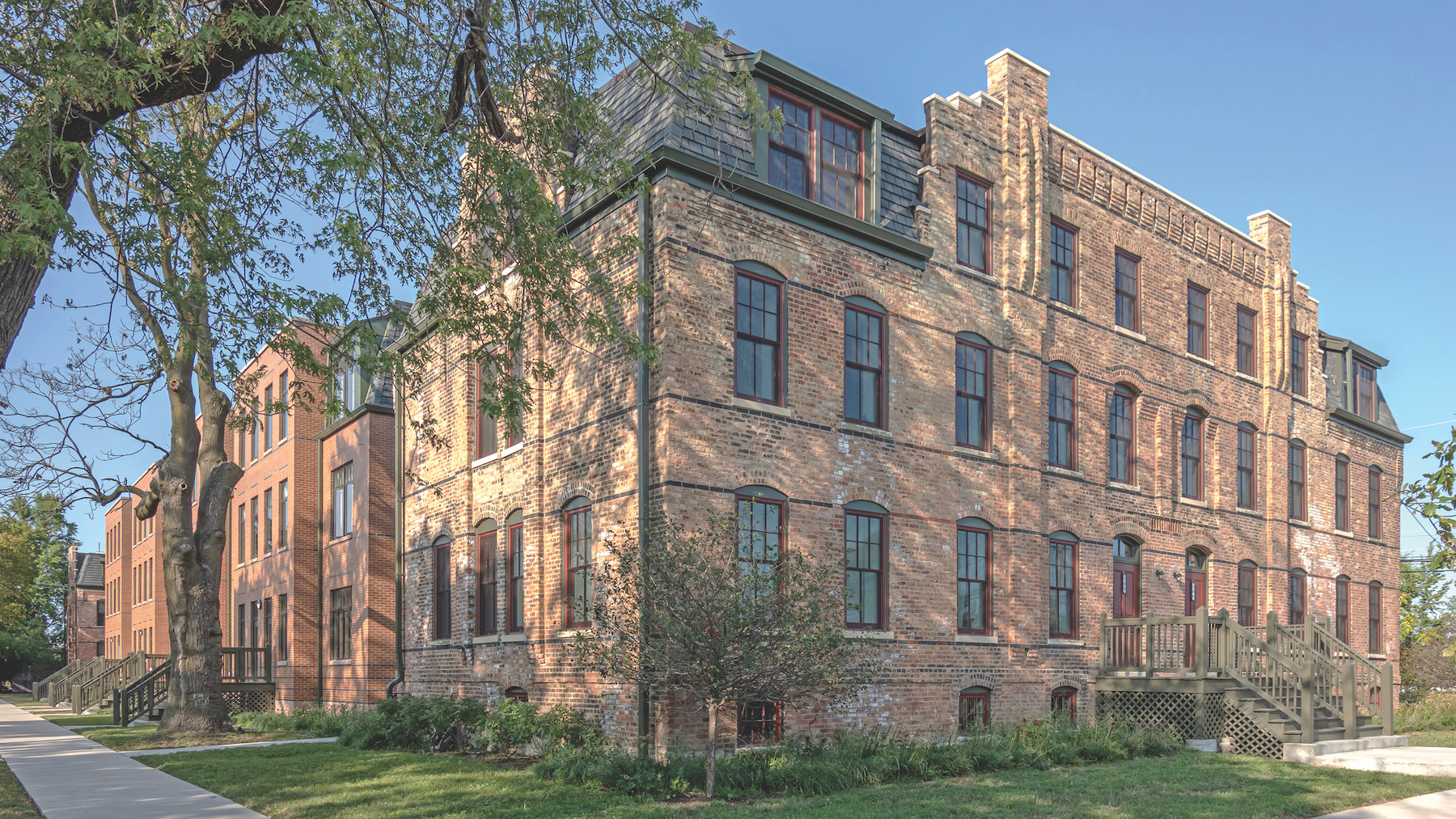
Two abandoned 19th-century landmark apartment buildings were renovated and a new building inserted between them to create 18 one-bedroom and 20 two-bedroom lofts for working artists (60% AMI) in Pullman, a planned community that was the home of the Pullman Car Company in the late 1800s; it was named a National Monument in 2015. Stantec (architect) captained the team of Pepper Construction (CM/GC) and Brown & Momen (CM) for owner/developer Pullman Artspace LLC and co-developers PullmanArts and Chicago Neighborhood Initiatives.
7. PATH METRO VILLAS | Los Angeles, Calif.
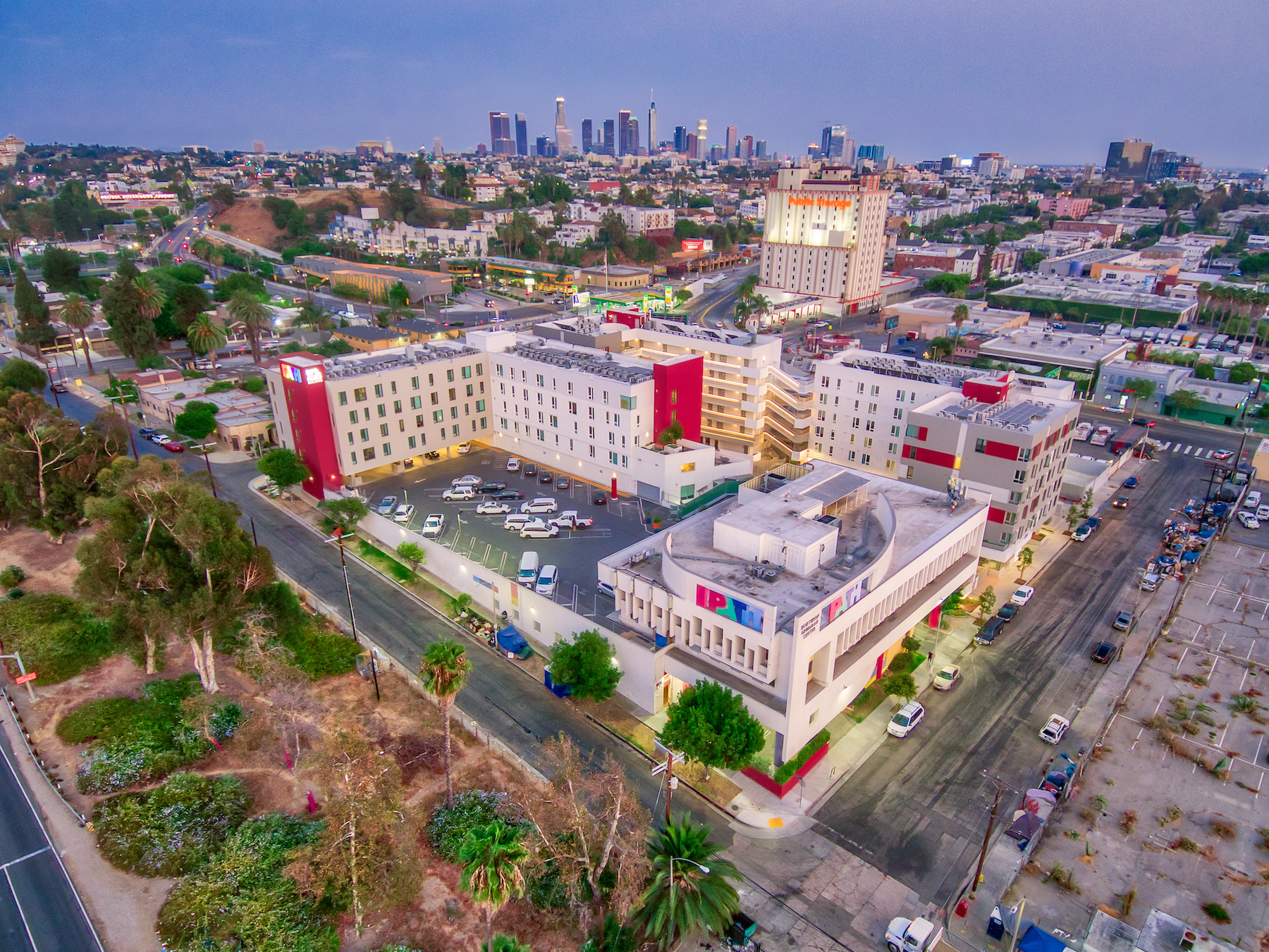
This two-phase enterprise provides 186 studios and one-bedroom units and supportive services for veterans, seniors, and the homeless in the Rampart Village section of Los Angeles. The developer, PATH Ventures, had to secure a zoning change from light industrial to residential. KFA Architecture (architect) worked with Englekirk Engineers (SE); KPFF Consulting Engineers (CE); ME Engineers (MEP); Irvine & Associates (land planner); Landscape Images (landscape architect, Phase 1); AHBE|MIG (landscape architect, Phase 2); and Walton Construction (GC).
8. VILLAS AT THE RIDGEWAY | Yonkers, N.Y.
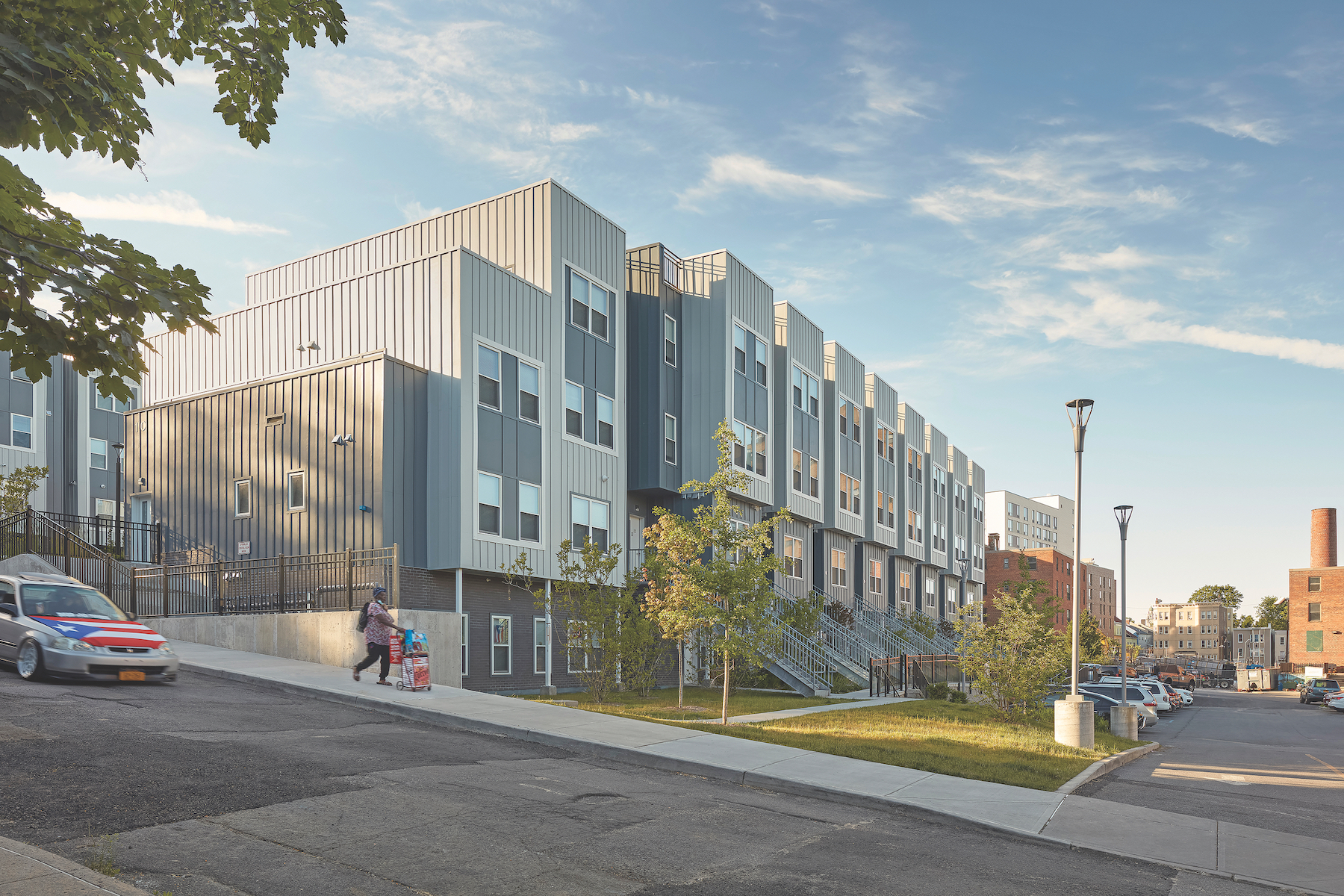
This redevelopment replaced three derelict public housing buildings with 70 two- to four-bedroom apartments at 30%, 50%, and 60% AMI, plus some market-rate units, using 40X16X10-foot modular units fabricated off site. Magnusson Architecture and Planning helmed the project for The Community Builders (developer), with LMW Engineering Group (SE), Philip Habib & Associates (CE), Johnson & Urban (MEP), Terrain-NYC (landscape architect), Steven Winter Associates (sustainability consultant), and JoDi Realty (builder). They also renovated a daycare center that serves the neighborhood.
9. PHOENIX ESTATES II (700 MANIDA STREET) | Bronx, N.Y.
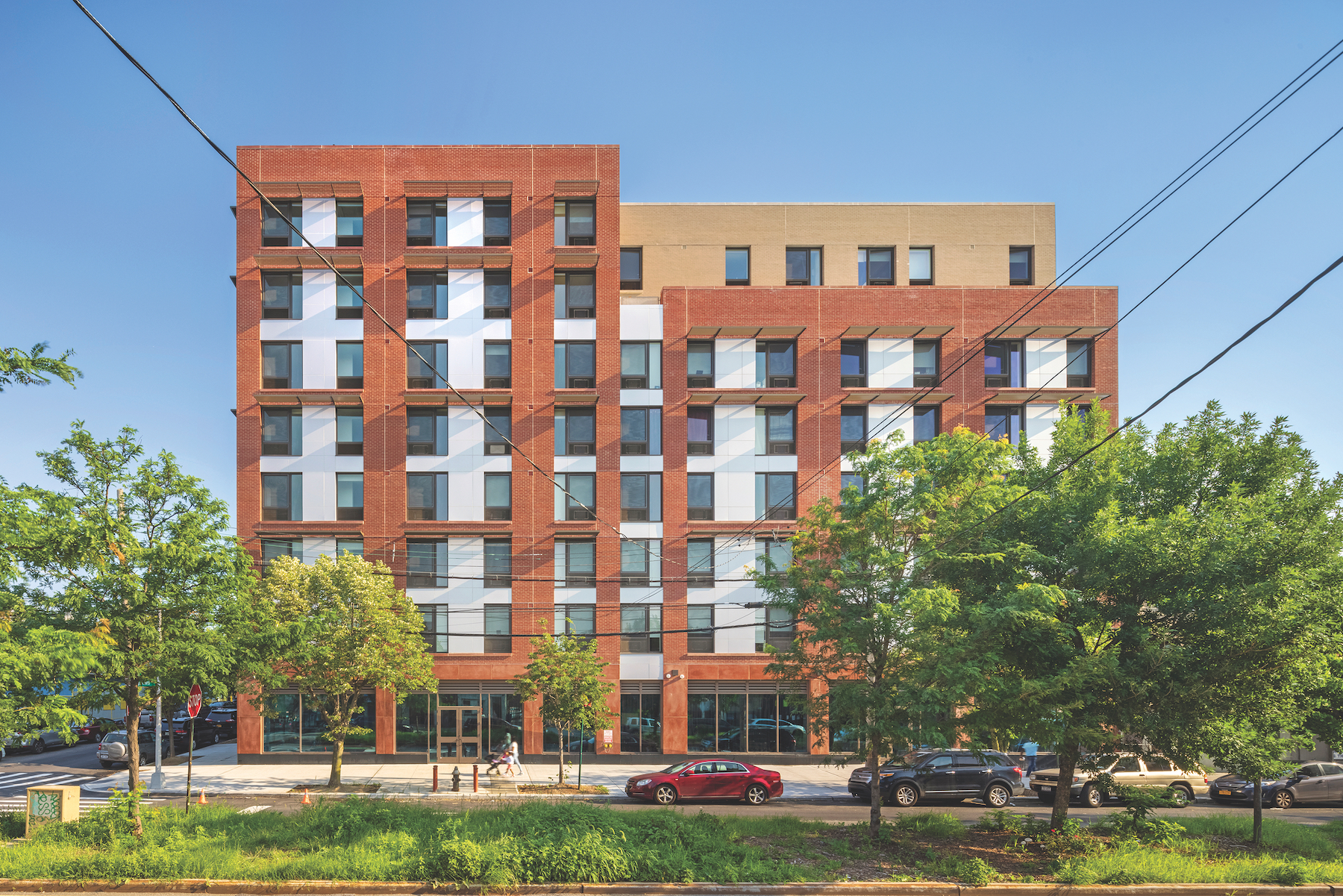
RKTB Architects took advantage of NYC’s 2016 Zoning for Quality and Affordability rules to gain 45% greater FAR for this 102,000-sf mix of 100% affordable senior (48) and family (60) apartments. The senior units are distributed throughout the six- to eight-story L-shaped complex. The $33 million transgenerational enterprise has a 7,100-sf yard and ground-floor space for two art galleries.
10. FROST TERRACE | Cambridge, Mass.
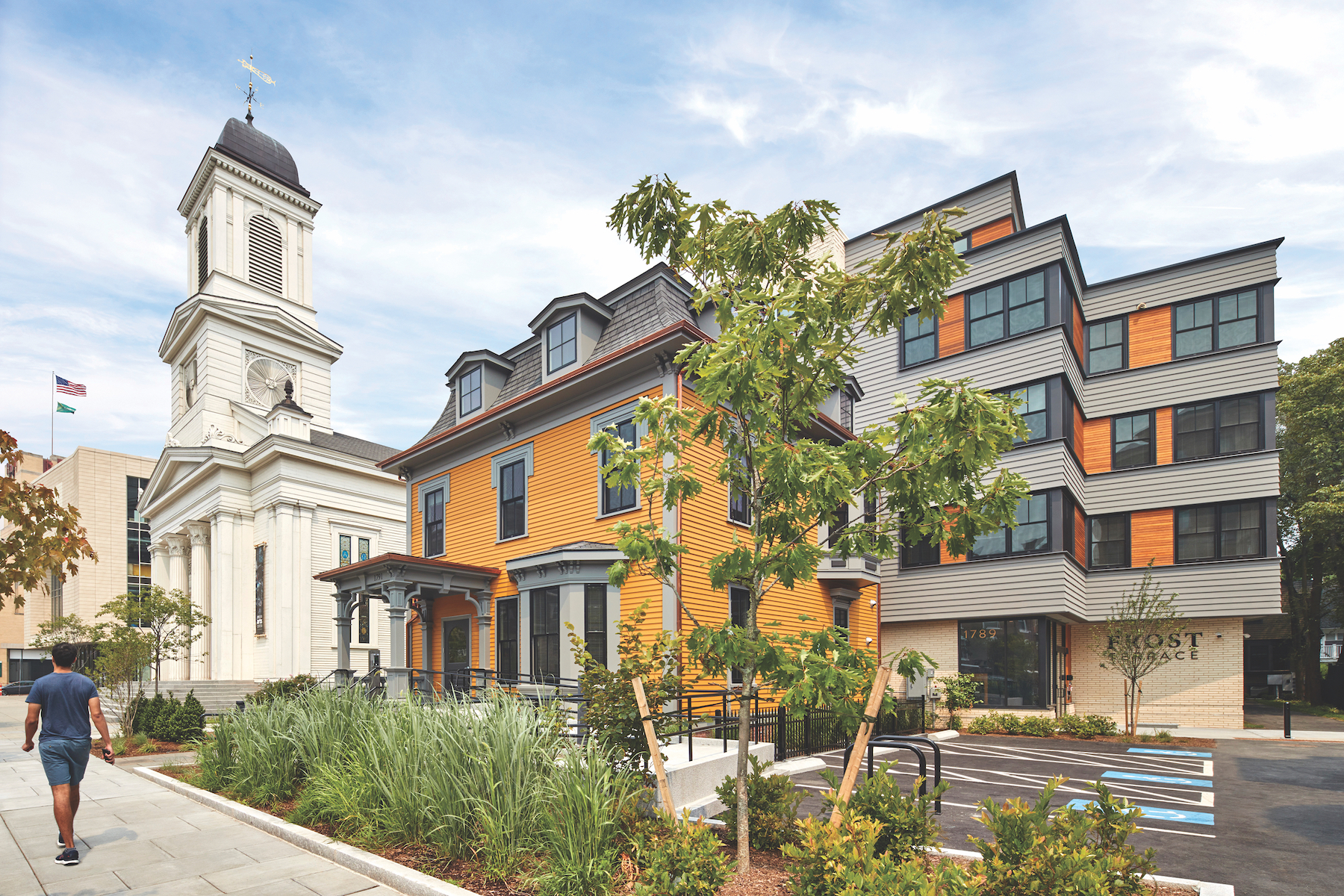
Bruner/Cott Architects inserted a three-story structure amid four restored single-family edifices to form a transit-friendly complex with 40 100% affordable (30-60% AMI) studio and one-, two-, and three-bedroom units. Eight of the apartments have been set aside for Section 8 vouchers. The developers, Capstone Communities and Hope Real Estate Enterprises, used the Commonwealth’s Chapter 40B speedy permit process to get all approvals in one step. They are targeting LEED Multifamily Midrise Gold.
11. WARLEY PARK | Sanford, Fla.
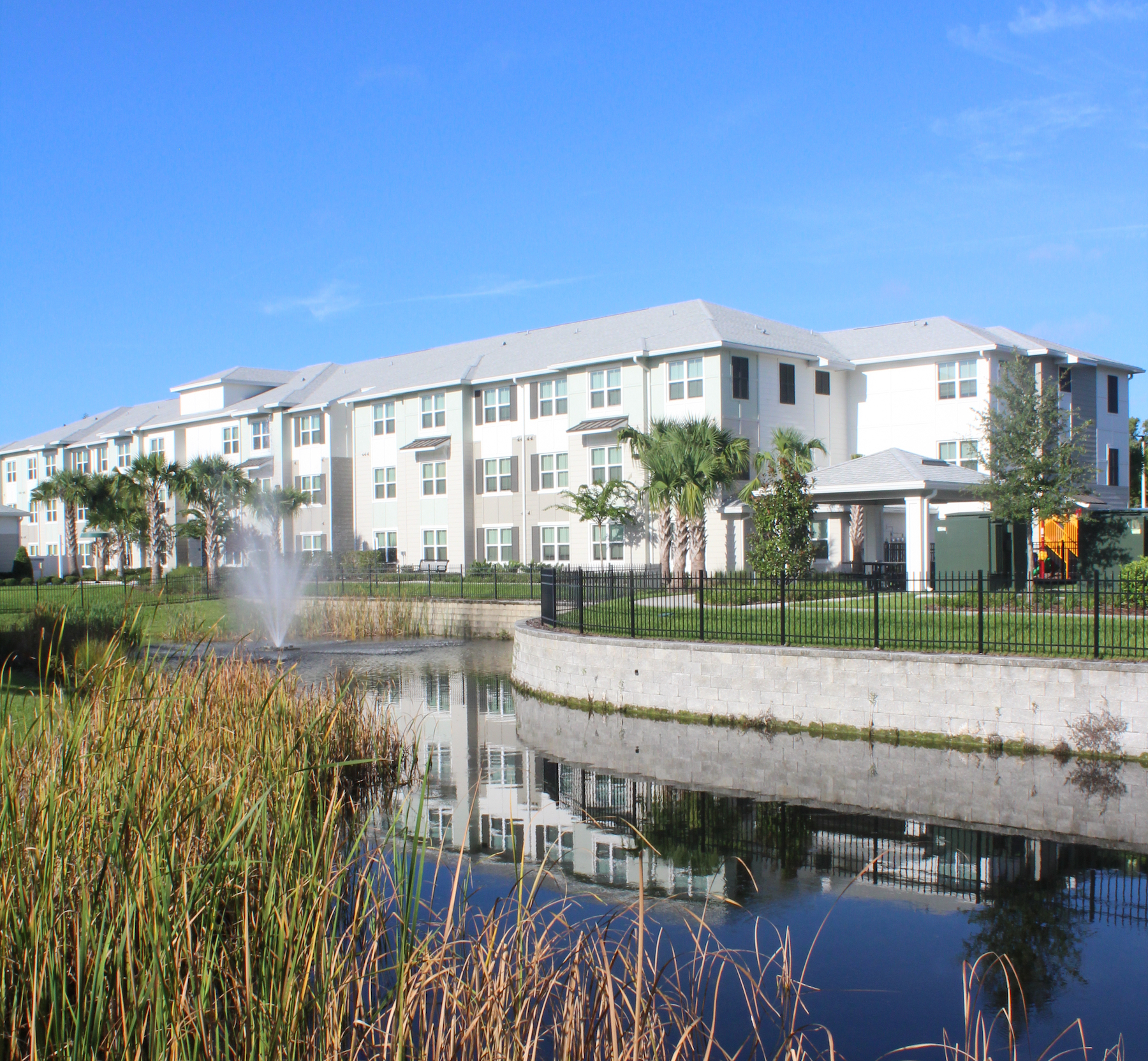
As Central Florida’s first permanent supportive housing community, Warley Park offers 81 one- and two-bedroom apartments for homeless individuals and families. On-site services (provided by Step Up on Second) include mental healthcare, job training, GED classes, and after-school programs. Wendover Housing Partners (developer) was assisted by Slocum Platt Architects and Roger B. Kennedy Construction.
12. WINTON GARDENS TOWERS | Rochester, N.Y.
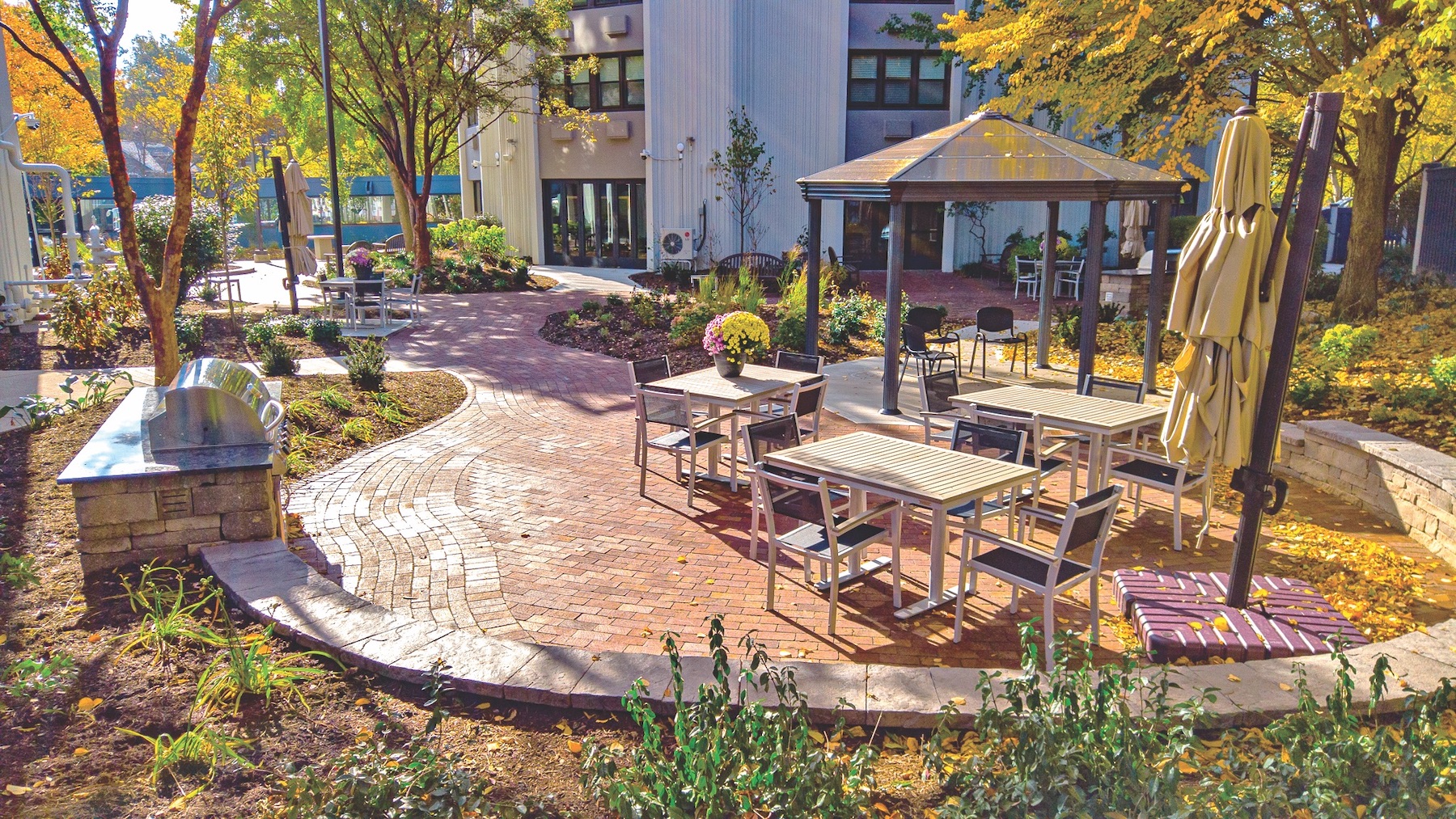
Originally built in 1973, these twin 11-story towers had deteriorated into a crime-ridden hot spot. Community Preservation Partners bought the property in 2018 and, with Rochester’s Cornerstone Group, invested $28.5 million in Energy Star appliances, LED lighting, energy-efficient PTACs, high-efficiency elevators, and security and accessibility upgrades. The 55+ community offers 200 units (425-525 sf) at 30% AMI, six at 60%. Ebesoldt Associates Architecture (designer) and Katerra (builder) performed the work.
13. FAIR OAKS COMMONS | Redwood City, Calif.
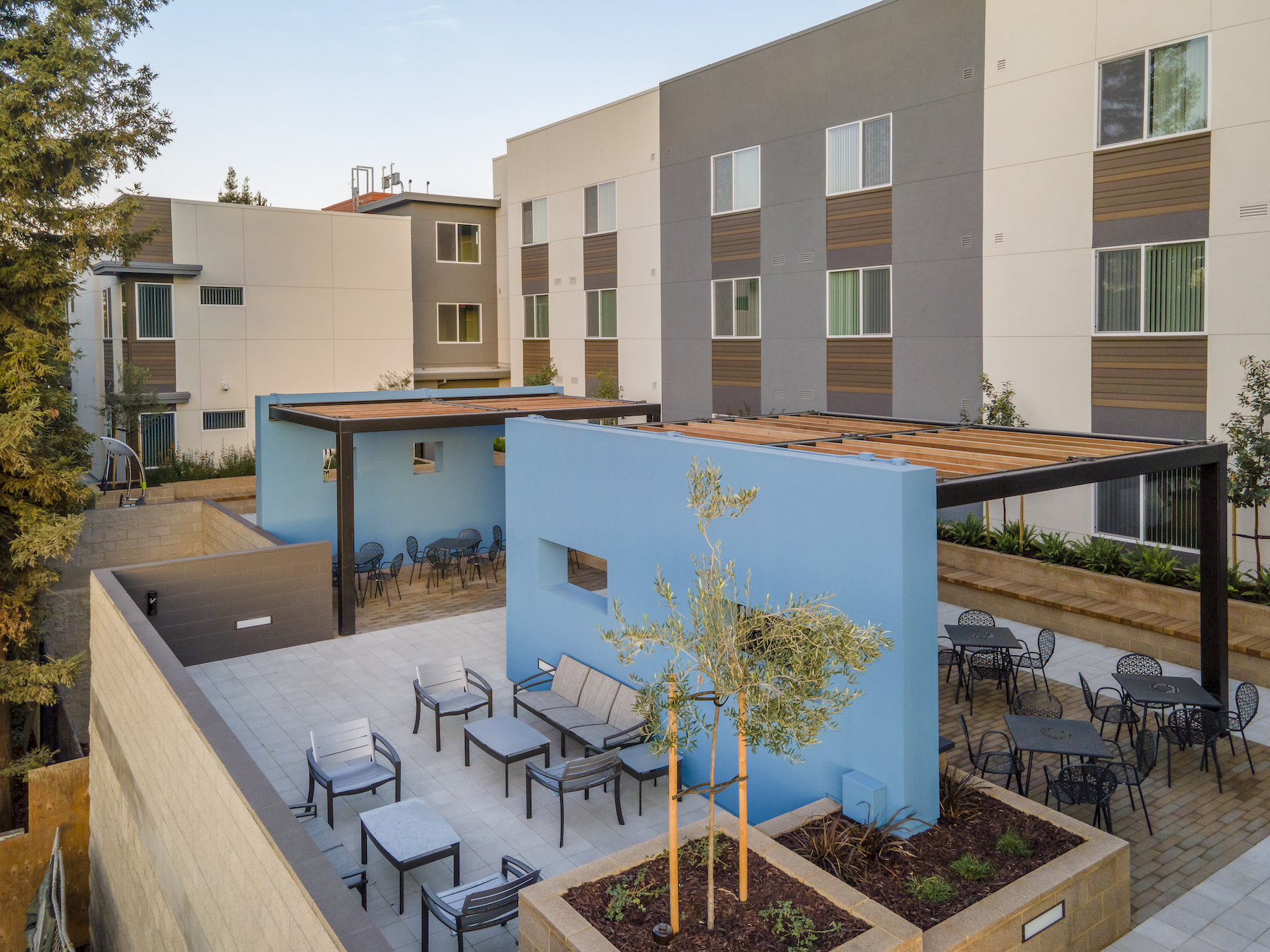
This $42 million complex was the first in San Mateo County to get one-stop approval under California’s SB 35. Its 67 living units (59 furnished) serve families, veterans, and the homeless (30-70% AMI). On-site service agency John Stewart Company provides job readiness programs, financial planning courses, and case management. Dahlin Group (architect) piloted the team: LUK and Associates (CE), Emerald City Engineers (MEP), The Guzzardo Partnership (landscape architect), and L&D Construction (GC).
Related Stories
Urban Planning | Jun 15, 2023
Arizona limits housing projects in Phoenix area over groundwater supply concerns
Arizona will no longer grant certifications for new residential developments in Phoenix, it’s largest city, due to concerns over groundwater supply. The announcement indicates that the Phoenix area, currently the nation’s fastest-growing region in terms of population growth, will not be able to sustain its rapid growth because of limited freshwater resources.
Multifamily Housing | Jun 15, 2023
Alliance of Pittsburgh building owners slashes carbon emissions by 45%
The Pittsburgh 2030 District, an alliance of property owners in the Pittsburgh area, says that it has reduced carbon emissions by 44.8% below baseline. Begun in 2012 under the guidance of the Green Building Alliance (GBA), the Pittsburgh 2030 District encompasses more than 86 million sf of space within 556 buildings.
Industry Research | Jun 15, 2023
Exurbs and emerging suburbs having fastest population growth, says Cushman & Wakefield
Recently released county and metro-level population growth data by the U.S. Census Bureau shows that the fastest growing areas are found in exurbs and emerging suburbs.
Engineers | Jun 14, 2023
The high cost of low maintenance
Walter P Moore’s Javier Balma, PhD, PE, SE, and Webb Wright, PE, identify the primary causes of engineering failures, define proactive versus reactive maintenance, recognize the reasons for deferred maintenance, and identify the financial and safety risks related to deferred maintenance.
Mixed-Use | Jun 12, 2023
Goettsch Partners completes its largest China project to date: a mixed-used, five-tower complex
Chicago-based global architecture firm Goettsch Partners (GP) recently announced the completion of its largest project in China to date: the China Resources Qianhai Center, a mixed-use complex in the Qianhai district of Shenzhen. Developed by CR Land, the project includes five towers totaling almost 472,000 square meters (4.6 million sf).
Mixed-Use | Jun 6, 2023
Public-private partnerships crucial to central business district revitalization
Central Business Districts are under pressure to keep themselves relevant as they face competition from new, vibrant mixed-use neighborhoods emerging across the world’s largest cities.
Multifamily Housing | Jun 6, 2023
Minnesota expected to adopt building code that would cut energy use by 80%
Minnesota Gov. Tim Walz is expected to soon sign a bill that would change the state’s commercial building code so that new structures would use 80% less energy when compared to a 2004 baseline standard. The legislation aims for full implementation of the new code by 2036.
Student Housing | Jun 5, 2023
The power of student engagement: How on-campus student housing can increase enrollment
Studies have confirmed that students are more likely to graduate when they live on campus, particularly when the on-campus experience encourages student learning and engagement, writes Design Collaborative's Nathan Woods, AIA.
Multifamily Housing | Jun 1, 2023
Income-based electric bills spark debate on whether they would harm or hurt EV and heat pump adoption
Starting in 2024, the electric bills of most Californians could be based not only on how much power they use, but also on how much money they make. Those who have higher incomes would pay more; those with lower incomes would see their electric bills decline - a concept known as income-based electric bills.
Multifamily Housing | May 30, 2023
Boston’s new stretch code requires new multifamily structures to meet Passive House building requirements
Phius certifications are expected to become more common as states and cities boost green building standards. The City of Boston recently adopted Massachusetts’s so-called opt-in building code, a set of sustainability standards that goes beyond the standard state code.


